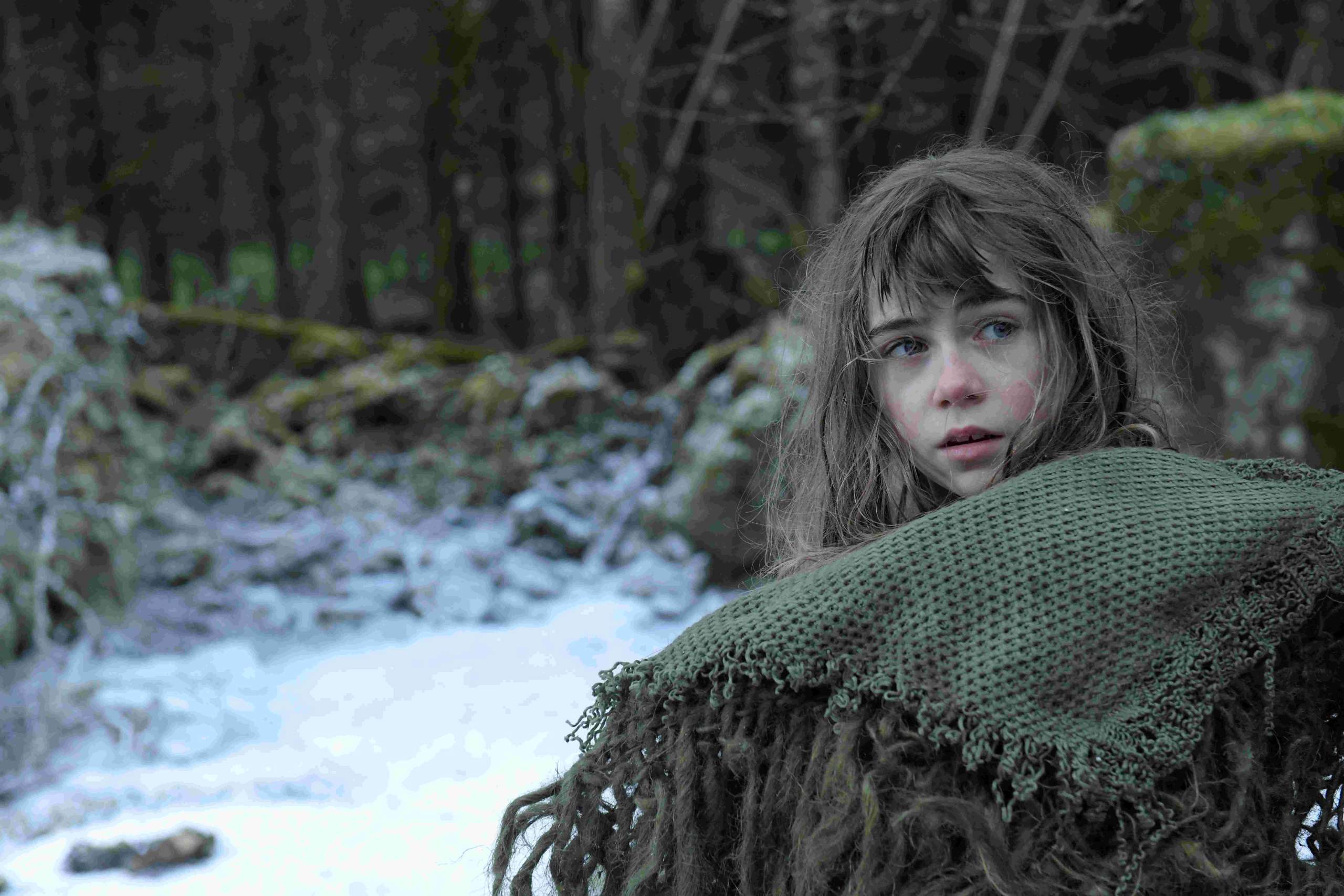
In the new vampire tale All the Moons, Spanish director Igor Legarreta pulls off the tricky feat of telling a small story against a grand backdrop. Set during the tail end of the Carlist Wars in 19th century Spain that saw factions fighting for various claims on the country’s throne, the film focuses on a young orphan named Amaia (Haizea Carneros) who is mortally wounded when a mortar strikes her orphanage. When offered a chance to be revived by a strange woman (Josean Bengoetxea), Amaia takes it and is in turn taken in by a makeshift vampiric family. But after only just a hint of what this life could be, Amaia is separated from the group as soldiers raid the vampires’ home.
In the aftermath of the attack, Amaia is forced to explore her new life as a vampire on her own, learning about the dangers of sunlight and her need to feed on blood. Legarreta’s approach to the vampire mythos is subdued but quite interesting. This isn’t vampirism by way of high fantasy, with the flying, glamoring, and brooding over one’s own damnation that often accompanies vampire archetypes. Legarreta’s approach is much more down-to-earth, exploring the physical, emotional, and social impacts of Amaia’s condition in new and interesting ways.
The social aspects come into play when Amaia finally makes her way out of reclusion after a decade and meets Cándido (Itziar Ituño), a farmer in a small, rural village who helps Amaia after she gets caught in one of his wolf traps. There’s an element of fate at play in this meeting, as we find that, like Amaia, Cándido is something of a lost soul after having lost his family, including a daughter.

Cándido and Amaia’s relationship is where the movie really starts to sing. First treating her gruffly as he’s spent so much time alone with his grief, his genuine affection quickly shines through even as he comes to terms with the fact that something isn’t quite right with her. As word of her condition spreads through the town, there’s the usual exploration of vampirism as a form of “other,” with the highly religious townsfolk fear her as a demonic presence. Cándido, however, sees through the vampiric elements and recognizes a scared, vulnerable girl who just wants someone to love her.
That vulnerability is at the core of an amazing performance from young actress Haizea Carneros, who has to carry much of the film on her shoulders as she spends large swaths of the film in solitude. Even when we first meet her in the orphanage, we can see she’s already a bit of an outcast as she chooses to admire a piece of art rather than participate in a group prayer. As she transitions from orphan to vampire, Carneros has to navigate playing both a young girl as well as an old woman in the body of a young girl. You can almost feel her exhaustion in the film’s final act as decades of immortality have left her emotionally spent.
While the film dwells firmly in the realm of the melancholic, it never feels overwrought and gives its characters glimmers of hope among the darkness. This is best conveyed through some masterclass cinematography from Imanol Nabea, who actually won a Special Jury Mention from Fantasia for his work on the film. There’s a calmness to Nabea’s shots that act as a balm among the hardships Amaia confronts in the story. Nabea captures the beauty of the Spanish countryside in ways that amplify the fairy tale feel of the movie without needing to add any fantastical elements (beyond the vampirism, of course).
All the Moons is just such a beautifully crafted film, and one that rightfully won Igor Legarreta Fantasia’s Best Director Award, as they praise how he “managed to capture poetic horror with pictorial precision.” That precision is so effective because it doesn’t lose any of the film’s emotional core. We horror fans love a story that features the outcasts, and Legarreta does that beautifully here in an ode to those forgotten creatures who yearn for and deserve love just as much as anyone.





